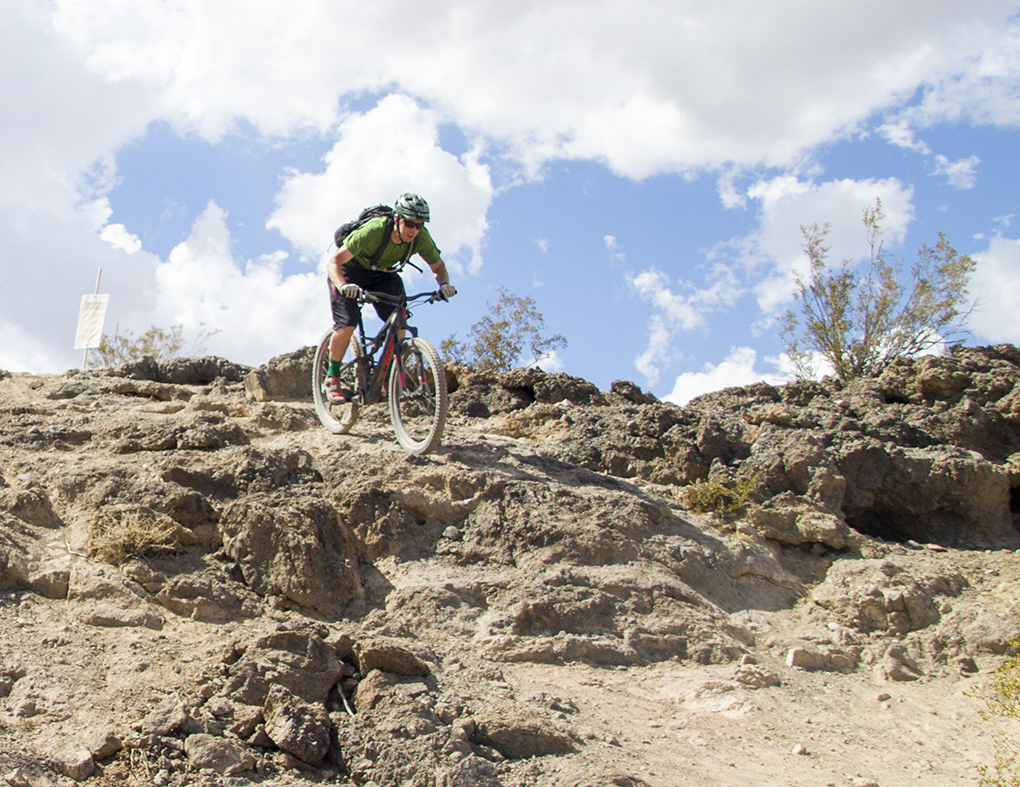The Ride
Right off the bat, two things became fairly apparent. First, this bike is quite light. Particularly for a bike in this travel class, this is one of the lightest options out there. (Just as an example, the top of the line Santa Cruz Bronson I rode, clad with Enve wheels and high end parts, was still about a pound heavier.)
Up the first little climb, there was a noticeable lack of heft. The downside here is that, somewhat to be expected for a bike this light, this is not the stiffest bike in its class. It certainly doesn’t rise to “scary wet noodle” status, but it’s not as solid as some of its competitors.
Of course, this is the top of the line model, and the more reasonably priced Stumpjumpers are going to weigh a bit more. That said, I suspect the frame mannerisms will remain similar, even the “heavier” builds are still quite light, and lighter than most other bikes with comparable travel / build kits.
The second noticeable trait is that the rear suspension is quite active. Out of all the bikes I’ve ridden at Interbike, this one might win the award for best small bump compliance. It is noticeably better in this regard than either the 2016 Devinci Troy or the 2016 Santa Cruz Bronson. Take note though: both of those bikes were revised recently. The pre-2016 models of both the Troy and Bronson are quite different, and the 2015 Troy is much closer to the Stumpjumper in this regard.
Through the rocky chunder of Bootleg Canyon, the rear end of the Stumpjumper did a great job of leveling the trail. Impressively, I also didn’t find that it ran out of travel too quickly. Many bikes that have good small bump compliance tend to bottom out hard on bigger hits. And while I certainly reached the bottom of the Stumpjumper’s travel, I didn’t feel like I was blowing through it.

The downside to that active rear suspension is that, even when cranking on the pedals, the rear end didn’t firm up all that much. This isn’t the least efficient pedaling bike out there, but it’s not a bike that favors leaving the rear shock fully open in “descend” mode when you’re slogging uphill. If I were doing any long climbs on this, I’d definitely be reaching for the lockout. I’d say the Stumpjumper pedals a bit better than the 2016 Scott Genius, but not as well as the Bronson or Troy.
In terms of stability and trail manners, the Stumpjumper doesn’t feel as locked in and solid as the Bronson or Troy, but it’s also a lot more fun to ride at a moderate pace. Some bikes feel like they want to go fast and smash through things. The Stumpjumper feels more playful; it dances through rock gardens rather than bludgeoning them into submission.
Ultimately, I think this comes down to the light weight of the bike, combined with it not being the absolute stiffest frame. It doesn’t hold a line as well as some of its burlier brethren, but the supple suspension and low weight make it easy to work through chunky trail and stay smooth.
Bottom Line
All in all, I had a lot of fun on the Stumpjumper. It’s an easy bike to hop on and be at home right away—the middle of the road geometry makes for a bike that should work well for a huge variety of riders, and the supple suspension keeps things comfortable and planted.
If I wanted to go smash through super technical descents, this isn’t the first bike in this travel class that I’d pick. But if I planned on putting in a long backcountry ride on rocky, rooty trails, the Stumpjumper would be high on my list. I suspect the suspension would keep my body a bit fresher after a long day in the saddle, and if the trail takes a turn for the technical, the bike is still more than capable of handling any terrain that it might happen across.

420mm equates to 16.49″ chainstays on a 27.5 bike, very impressive and I do believe it is the shortest out there.